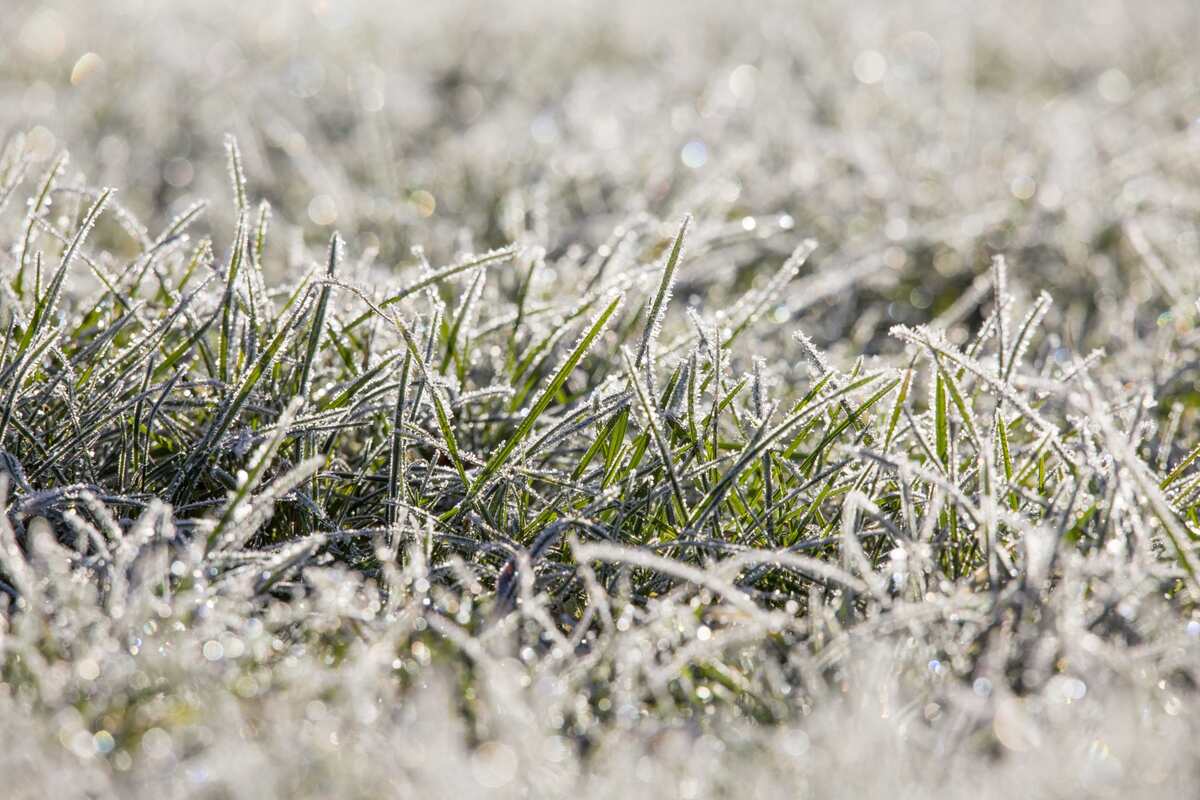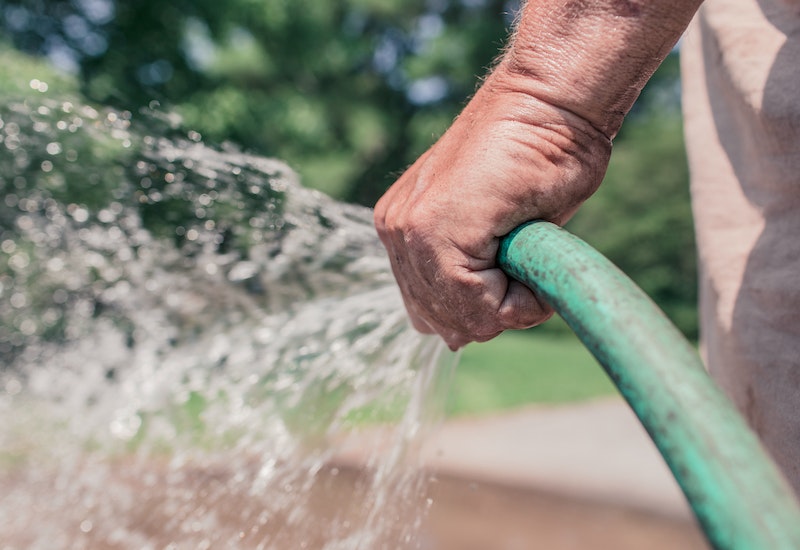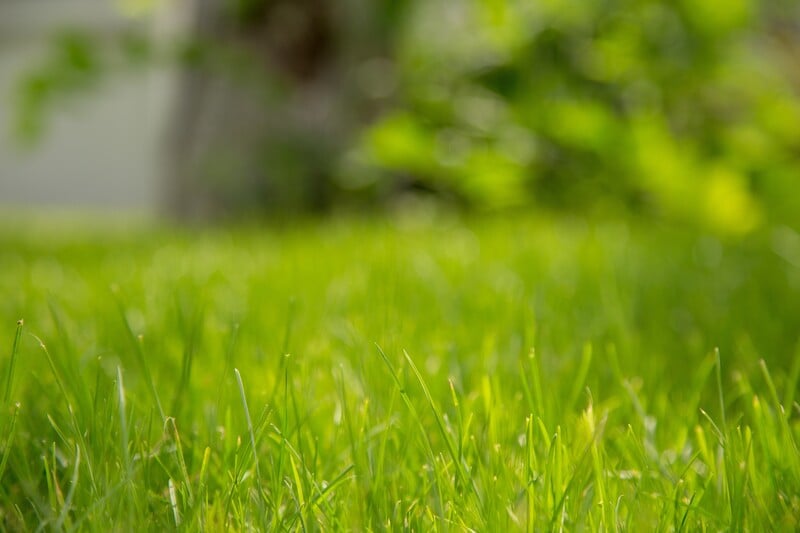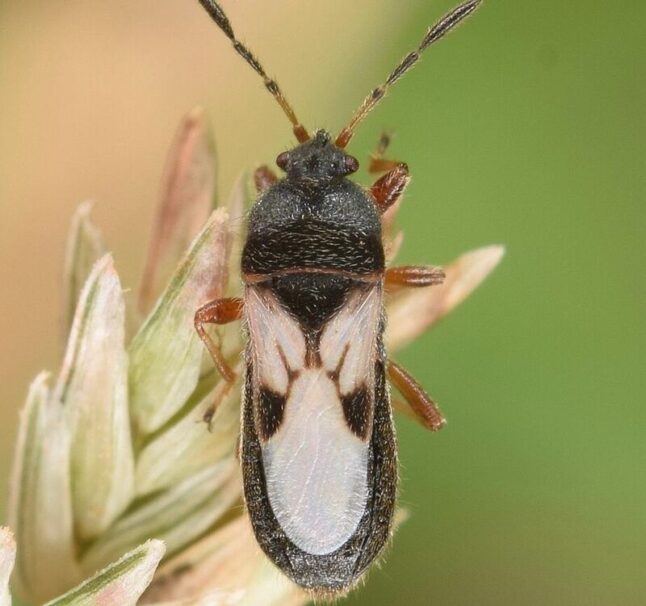
In southwest Florida, freezing temperatures are rare. Winters are mild and damp, with some cold snaps that can trigger dormancy in warm-season grasses. Wet and warm summer weather turns dry and cold, and lawn care changes drastically. We’re telling you all about it in this complete prep guide to winter lawn care for Tampa, FL.
The main winter lawn care tips we cover in this article:
- 1. Think Twice Before Fertilizing Your Tampa Lawn
- 2. Water on an “As-Needed” Schedule
- 3. Apply a Spot-Spray Post-Emergent Herbicide
- 4. Prevent Summer Weeds with a Pre-emergent Herbicide
- 5. Mow Less Often and Leave the Grass a Little Taller
- 6. Keep an Eye on Fungal Diseases
- 7. Overseed with Ryegrass
- 8. Watch Out for Chinch Bugs
- FAQ
1. Think Twice Before Fertilizing Your Tampa Lawn
Practically speaking, you start preparing your lawn for winter in the fall. Due to the Hillsborough County ban, you can’t apply nitrogen and phosphorus fertilizers from June to September. So fall is an excellent chance to help the grass recover from:
- High, stressful temperatures
- Fast summer growth
- Heavy rainfall washing Tampa’s sandy soil of nutrients
Mark October in your lawn care calendar. It’s the best time to apply lawn fertilizer this time of year. If you miss it, use November as a last chance (but no later).
What about winter? With days getting colder, shorter, and less intense sunlight, your turfgrass slows its growth and might even go dormant. You’ll be tempted to fertilize, forcing it to green up.
Don’t. Let it do its winter routine. The energy saved from not growing shoots is stored in the root system. Around the time of the Plant City Strawberry Festival, your lawn will come back thicker, denser, and greener than ever, and you can start planning spring lawn care with a good grass fertilizer.
2. Water on an “As-Needed” Schedule

Winter lawns in Florida differ from the rest of the year. The grass is semi-dormant, so it needs less water. But the cold weather is dry in Tampa Bay, and you can’t rely on rainfall. It’s all on you to ensure the grass has enough water without overwatering it.
The best way to decide is by watching your lawn. The grass will tell you when it needs water:
- It changes color from green to bluish-gray.
- Grass blades start to fold in half.
- Footprints remain on the lawn after walking on it.
Pro tips for watering Tampa lawns during the winter months:
- Don’t irrigate during a freeze.
- If using an automated irrigation system, set it to water once every 10 to 14 days or change the quantity to 50% of the regular amount of water.
3. Apply a Spot-Spray Post-Emergent Herbicide
Spot-spraying is a follow-up to your timely pre-emergent application on annual winter weeds in October. Some weeds might have managed to emerge from their seeds.
From November to February, you can remove weeds either by hand or by spot-treating them with a post-emergent herbicide. The most common winter annual weeds that can put pressure on the grass are:
- Chickweed
- Annual bluegrass
- Clover
- Henbit
- Wild geranium
4. Prevent Summer Weeds with a Pre-emergent Herbicide

Photo Credit: Pexels
In February, it’s time to prevent the annual summer weeds from taking off. Apply a pre-emergent herbicide when temperatures reach 65 to 70°F for 4 to 5 days. Once the weeds have emerged, preventive herbicides have little to no weed control effect.
Don’t apply a pre-emergent herbicide before or immediately after you seed or overseed:
- Bermudagrass
- Bahiagrass
- Centipedegrass
- Ryegrass (winter overseed)
Wait until the new growth is about 2 to 3 inches tall to ensure the herbicide does not affect the seed and young plants. Among the most popular weeds that can complicate summer lawn care in Tampa Bay are:
- Crabgrass
- Dandelion
- Dollar weed
- Florida pusley
- Goosegrass
5. Mow Less Often and Leave the Grass a Little Taller
The Cigar City has mild, pleasant winters and a mowing routine that never ends but changes with the season. While most warm-season lawns don’t go completely dormant in central Florida, they slow their growth during winter. You’ll mow less often, from once every two weeks to even once a month, depending on the type of grass, watering, shade, etc.
The lawn mowing height also changes. Depending on the grass type, keep the blades higher, at 2.5 to 5 inches. Taller grass has a better stress tolerance.
6. Keep an Eye on Fungal Diseases
Temperatures falling below 80°F mean it’s time to watch for signs of brown patch disease. Active from November through May, brown patch is triggered by high humidity. To prevent it:
- Avoid overwatering the lawn
- Keep the thatch layer at a minimum
- Use core aeration to ensure good drainage if the soil is compacted
How to recognize it? You’ll see patches of grass about 1 foot in diameter or larger turning yellow, reddish-brown to straw-color, and eventually brown.
Brown patch disease doesn’t damage the roots, only the grass blades, which are easy to pull out. A dark and rotten area at the grass blade base helps you differentiate it from herbicide damage on St. Augustine.
Other fungal diseases to watch for are:
- Helminthosporium Leaf Spot (active all year round) activates in mild and wet weather and attacks all warm-season grasses but gets aggressive in Bermuda lawns. You can recognize it by the pinhead-sized, solid brown to purple-colored spots or expanded lesions with bleached centers that appear on grass blades.
- Pythium Root Rot (active all year round) spreads in lawns with high humidity, poor soil drainage, and overwatering. Infected grass has yellow, light green, or brown areas and an overall depleted look (the grass is thin and wilted).
How to prevent and treat fungal diseases in your winter Tampa lawn?
- Keep it healthy, with good drainage, mowing, and watering. Avoid winter fertilization.
- Hire professional lawn care services to apply effective treatment if you notice signs of disease.
7. Overseed with Ryegrass
Ryegrass is a cold-season grass that establishes rapidly, grows fast, and dies when the spring temperatures go up, and the warm-season grasses start their season. It’s a temporary aesthetic fix to keep your Florida lawn lush, vibrant, and green while your St. Augustine, Zoysia, Bermuda, or Bahia grass is semi-dormant.
Ryegrass is very easy to seed all over your backyard and front yard. All you need to do is:
- Mow the lawn slightly lower to give the new shoots space to grow.
- Rake the fallen leaves to ensure grass seeds are reaching the soil.
- Spread the ryegrass seeds.
- Water the lawn.
8. Watch Out for Chinch Bugs

Photo Credit: Christina Butler / Wikimedia Commons / CC BY 2.0
While they are more active when it’s warm, chinch bugs can attack your Florida lawn all year round. These Tampa lawn pests feed on the grass sap, draining the plant until it withers and dies.
In their presence, your lawn gets yellow and brown patches, sometimes with bare spots in the middle. The bugs usually appear on lawns with stressed grass, which means:
- Mowed too short.
- Overwatered or underwatered.
- Exposed to too much nitrogen.
How to test for chinch bugs in the winter? Use a handheld vacuum and vacuum an area of about 1 square foot with healthy and dead grass. Dump the debris on white paper and look for chinch bugs. Contact your local UF Extension Office to help you identify them.
How to deal with chinch bugs?
- Keep the grass healthy.
- Remove thick layers of thatch.
- Apply a pesticide. Chinch bugs have become resistant to many insecticides, so it’s better to contact a pest control company to take care of this.
Also, keep an eye out for mole crickets and army ants that can damage the lawn while tunneling and building mounds.
FAQ
Preparing your Florida lawn for winter starts from fall:
● Fertilize in October.
● Apply a pre-emergent herbicide in October.
● Change the mowing setting to cut the grass taller.
● Adapt the watering schedule to weather and grass growing rhythm.
● Ensure good drainage and dethatch the lawn if necessary.
Yes, warm-season grasses typically enter semi-dormancy in Tampa during winter. They’re growing slower, so you’ll mow every two to four weeks instead of weekly, but you still need to trim the grass during winter.
To keep your grass green during the winter in southwest Florida, start by ensuring your sprinkler system functions correctly and provides the appropriate amount of water. Also, avoid fertilizing the grass. It will stress the plants and make them more vulnerable to colder weather.
Some hardy deciduous Tampa shade trees, like the crape myrtle, lose their leaves mostly during winter, covering lawns in organic debris. They add raking to lawn care tasks and offer an excellent chance to fill the compost bin.
Give Your Lawn the Best Winter Maintenance
Winter lawn care prepares the grass for a thick and dense green up in the spring and healthy, resistant plants throughout the long Tampa Bay summer. It’s a delicate season when watering, mowing, and treating grass problems is done mainly by careful observation and less by standard recipes.
Winter is also one of the best moments to involve a lawn care professional in your routine. Find an experienced lawn care team in the Tampa Bay area and get the best winter maintenance for your lawn today.
Main Image Credit: PublicDomainPictures